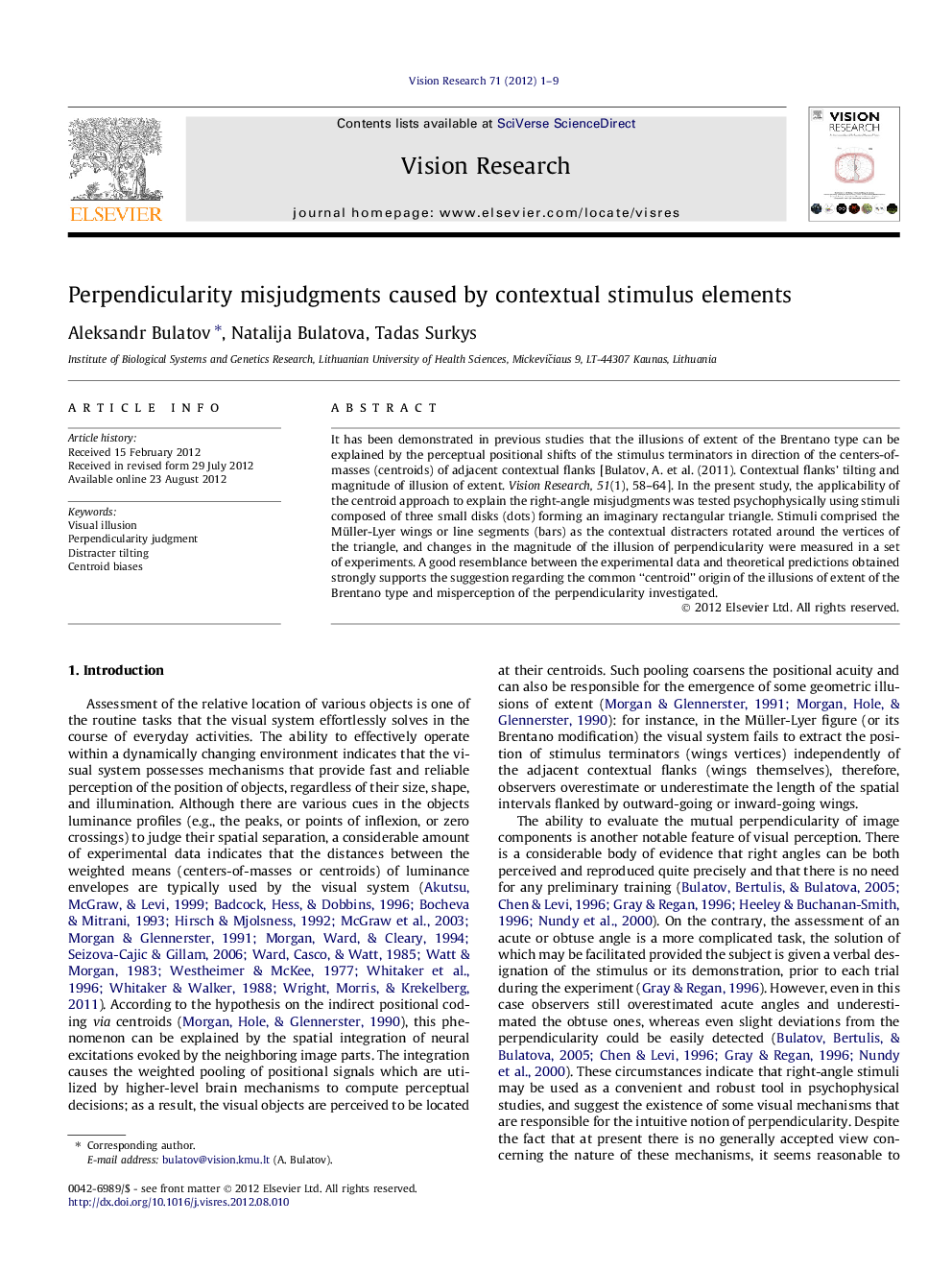| Article ID | Journal | Published Year | Pages | File Type |
|---|---|---|---|---|
| 4033900 | Vision Research | 2012 | 9 Pages |
It has been demonstrated in previous studies that the illusions of extent of the Brentano type can be explained by the perceptual positional shifts of the stimulus terminators in direction of the centers-of-masses (centroids) of adjacent contextual flanks [Bulatov, A. et al. (2011). Contextual flanks’ tilting and magnitude of illusion of extent. Vision Research, 51(1), 58–64]. In the present study, the applicability of the centroid approach to explain the right-angle misjudgments was tested psychophysically using stimuli composed of three small disks (dots) forming an imaginary rectangular triangle. Stimuli comprised the Müller-Lyer wings or line segments (bars) as the contextual distracters rotated around the vertices of the triangle, and changes in the magnitude of the illusion of perpendicularity were measured in a set of experiments. A good resemblance between the experimental data and theoretical predictions obtained strongly supports the suggestion regarding the common “centroid” origin of the illusions of extent of the Brentano type and misperception of the perpendicularity investigated.
► Rotation of distracters evokes sinusoidal changes of magnitude of perpendicularity errors. ► The pattern of the changes does not depend on a particular shape of distracters. ► Our data support the suggestion on common origin of misperception of extent and perpendicularity.
